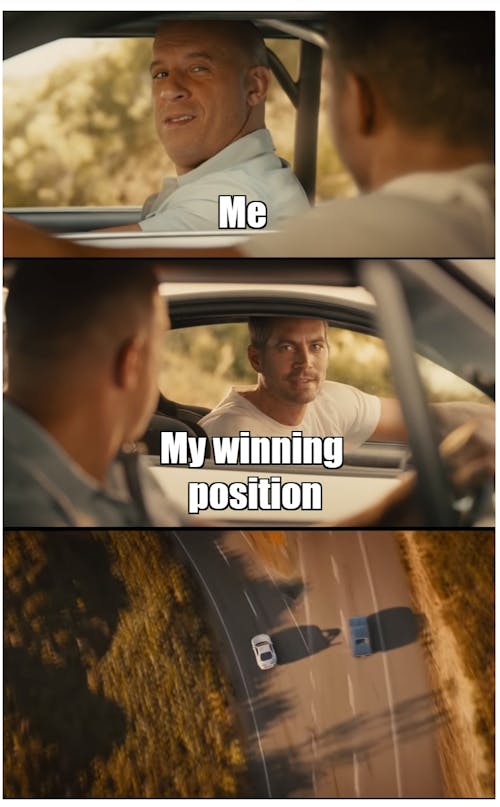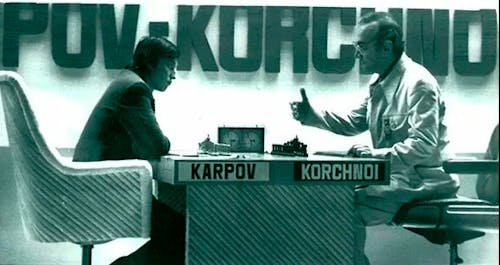Are you sure you want to delete your account?
(This will permanently delete all of your data - purchases, game scores, ratings, etc)
Change your username
Your current username is: guest
Change your account email address
Your current account email is:
Redeem your Fampay code here!
Use your Fampay code to get access to the Play Magnus Plus Membership!

How Good is Your Mating Technique?
Watching games contested between novice chess players can be quite nerve-racking. You never know how they will end, even if one side has a commanding material advantage. In some cases, a sneaky stalemate can pop out of nowhere. In other situations, the winning player gets tired of chasing the opponent's king around and settles for a peaceful outcome. Therefore, for people who are new to chess, learning how to give basic checkmates is one of the things that give the most bang for the buck.
In the good old books for beginners, there was always a chapter on how to checkmate the opponent’s lone king, from very basic ones such as “king + queen vs. king” and “king+rook vs. king” to more sophisticated cases such as “king+two bishops vs. king” and “king+bishop+knight vs. king”.
Nowadays, there is no need to flip the pages, set up the board, and figure out whether you are on the right track or not by yourself. The Magnus Chess Academy app offers theoretical lessons with clear-cut explanations of the key techniques and practical exercises that could be used as drills to learn to give checkmate on auto-pilot.
Anyway, once you are no longer a beginner, how important is it to know how to checkmate the opponent as efficiently as possible?
Of course, you might sniff at this question and say that everyone knows how to win quickly when having a commanding advantage, such as a king and a rook vs. a lonely king. However, I recall a test imposed by IM Vladislav Akselrod on three of my friends, rated in the FIDE 2000-2200 range. They had to mate him with king and rook vs. king in blitz mode. The number of moves was recorded. They struggled and averaged over 20 moves, while in the starting position, something around 10 moves was required with perfect play. This episode shows that even relatively proficient chess players have relatively poor mating techniques. But is it even relevant? After all, no one will keep playing against a 2000+ in such a position. I would say that it still matters. For instance, in an online blitz game with no increments, one often has to mate with a queen or even two queens in like a second. This requires a sound knowledge of the method and a well-versed use of premoves. Sometimes the difference between making it on time and being late is the full point.
In the pre-increment era, I recall IM Andrei Chigvintsev shuffling the pieces and agreeing to a draw in a “king+two bishops vs. king” endgame because he was sure that he won’t be able to checkmate the opponent on time. This still looked rather amusing to me, though.
The “king+bishop+knight vs. king” checkmate is particularly tricky. The reigning (at that time) Women’s World Chess Champion, Anna Ushenina, failed to convert it against Olga Girya in 2013. The chess community, which is not particularly forgiving of others' mistakes, went wild. Despite all her fantastic achievements, to this day, some people know Ushenina only as "the girl who couldn't mate with a knight and bishop". Anyway, this situation is not unique. There were other similar cases featuring top players. For instance, Nils Grandelius couldn't convert it against Magnus Carlsen in Chess24 Banter Blitz Cup, 2020 or, even more recently, Hikaru Nakamura didn't win a bishop + knight endgame vs. Nodirbek Abdusattorov, Chess.com Rapid Wk13, 2022.
One can only imagine how devastated Ushenina was after letting such an advantage slip in a classical game!
I myself have to admit that while I seem to remember the basic ideas, such as trying to lure the opponent’s king into the corner of the bishop’s color, the W-maneuver, and other such details, I am still not sure that I will be able to deliver the mate under time pressure within 50 moves. However, in a classical game, I have been in such a situation only once, and I was actually on the losing side! My opponent, at that time a modest player rated somewhere about 1800, successfully checkmated me. Back then, I was quite surprised and impressed by this feat. In 2022, I was quite proud of myself for delivering such a mate in a blitz game. That being said, the opponent clearly didn't know what he was doing and defended not as well as he could have.
Is it practical to try to master even more advanced endgames, such as two knights vs. a pawn? I would say it depends on how good your chess memory is. Frankly, I have learned the Troitsky line on a few occasions, but my brain seems to be reluctant to memorize it, automatically classifying it as "information you are not likely to ever use in your life". If you have what it takes to study it once and for all, then go ahead and do it! However, as far as I know, there are very few chess players out there whose brains seem to be hardwired for such daunting tasks. For others, the spaced repetition method comes to the rescue. If you don't practice and rehearse the stuff you have learned regularly, you are likely to forget it!
Sergey Karjakin demonstrates a game where he actually had to apply the knowledge of the "two knights vs. a pawn" theory.
To crown it all up, should a serious chess player master all the standard checkmating techniques? There are different opinions on this issue. The endgame experts emphasize the importance of this type of study. Most practical players believe that only the basics (extra rook, extra queen) are to be learned until perfection, while spending a lot of time on practicing, let’s say, “king + two knights vs. king and pawn" might turn out to be inefficient in terms of time investment because you are likely to pretty much never encounter this endgame in your entire career. In fact, I know quite a few masters who don’t remember how to checkmate with “king+bishop+knight vs. king”, not to mention more sophisticated tabiyas.

